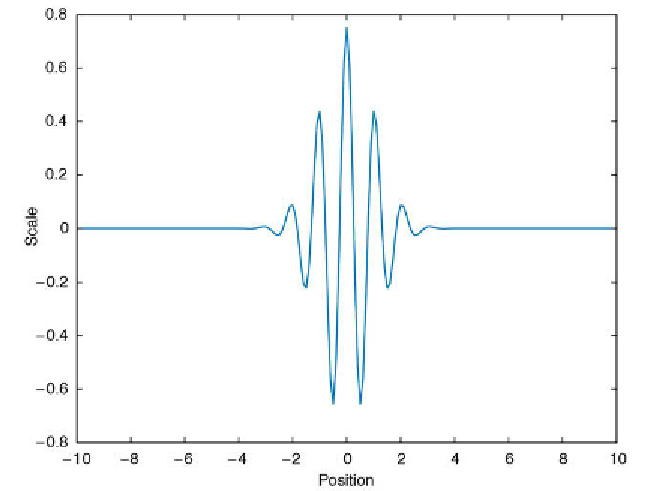Geoscience Reference
In-Depth Information
Fig. 5.15
Morlet mother wavelet with wave number 6.
We then need to dei ne the values of the scales for which the wavelet
transform will be computed. h ese values dei ne how much a wavelet is
stretched or compressed to map the variability of the time series at dif erent
wavelengths. Scales with smaller values correspond to higher frequencies
and can therefore map rapidly-changing details, whereas those with higher
values can map the long-term variations. h e dei nition of the scales i rst
requires the sampling interval
dt
of our time series
x
. We then use the
default spacing
ds
of 0.4875 for a Morlet wavelet, following the instructions
contained in the Wavelet Toolbox manual (MathWorks 2014b). h e smallest
value for the scales
s0
is usually chosen to be twice the sampling interval, i.e.,
2*dt
. We next calculate the number of scales
nb
, which depends on the length
of the time series and the spacing of the scales. Finally, we calculate the scales
scales
themselves depending on the smallest scale, the number of scales, and
the spacing of the scales, using equations provided in the Wavelet Toolbox
manual (MathWorks 2014b).
dt = 0.5;
ds = 0.4875;
s0 = 2*dt;
nb = fix(log2(length(x))/ds)+1;
scales = s0*2.^((0:nb-1)*ds);

